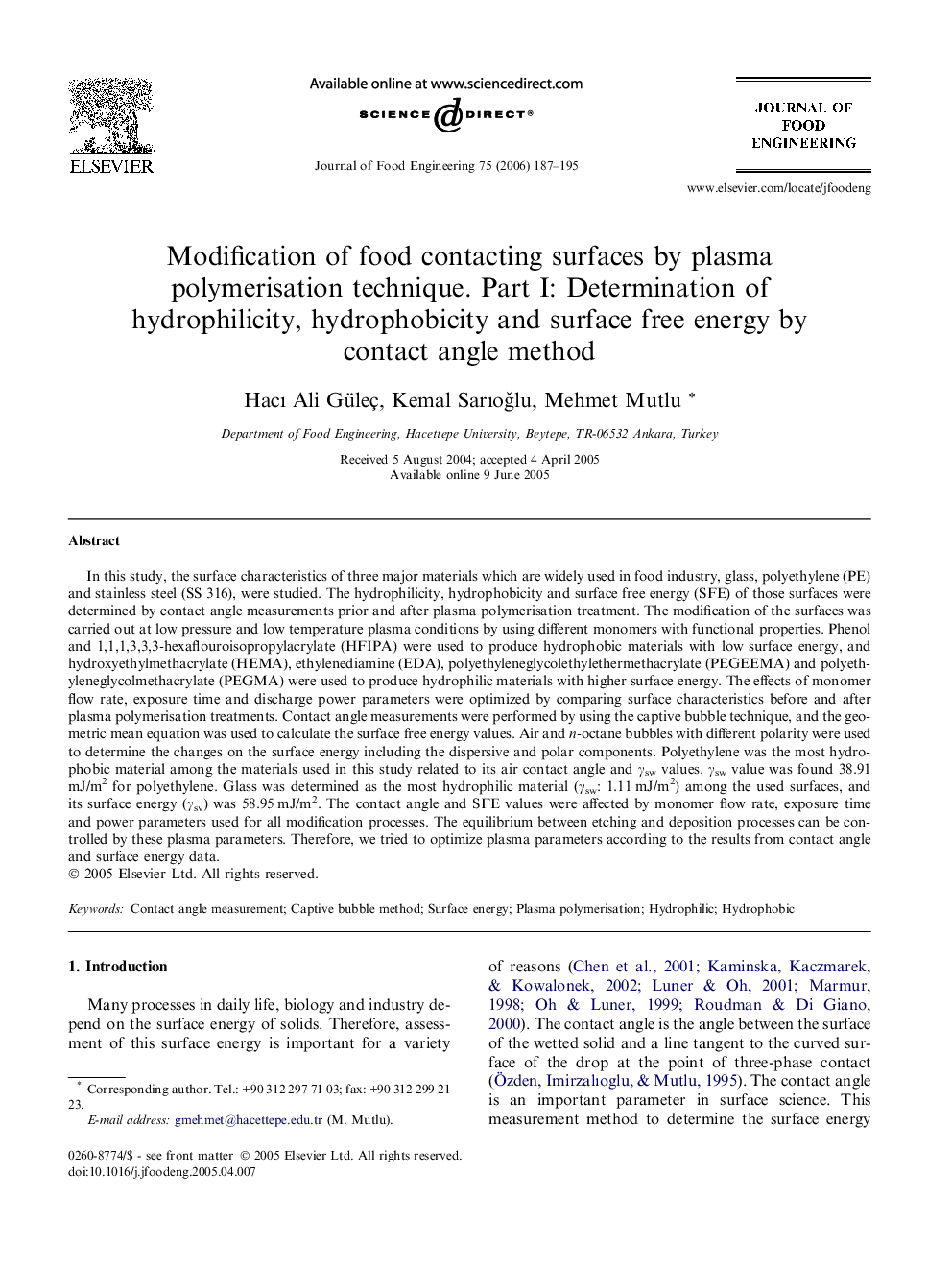| کد مقاله | کد نشریه | سال انتشار | مقاله انگلیسی | نسخه تمام متن |
|---|---|---|---|---|
| 226343 | 464535 | 2006 | 9 صفحه PDF | دانلود رایگان |

In this study, the surface characteristics of three major materials which are widely used in food industry, glass, polyethylene (PE) and stainless steel (SS 316), were studied. The hydrophilicity, hydrophobicity and surface free energy (SFE) of those surfaces were determined by contact angle measurements prior and after plasma polymerisation treatment. The modification of the surfaces was carried out at low pressure and low temperature plasma conditions by using different monomers with functional properties. Phenol and 1,1,1,3,3,3-hexaflouroisopropylacrylate (HFIPA) were used to produce hydrophobic materials with low surface energy, and hydroxyethylmethacrylate (HEMA), ethylenediamine (EDA), polyethyleneglycolethylethermethacrylate (PEGEEMA) and polyethyleneglycolmethacrylate (PEGMA) were used to produce hydrophilic materials with higher surface energy. The effects of monomer flow rate, exposure time and discharge power parameters were optimized by comparing surface characteristics before and after plasma polymerisation treatments. Contact angle measurements were performed by using the captive bubble technique, and the geometric mean equation was used to calculate the surface free energy values. Air and n-octane bubbles with different polarity were used to determine the changes on the surface energy including the dispersive and polar components. Polyethylene was the most hydrophobic material among the materials used in this study related to its air contact angle and γsw values. γsw value was found 38.91 mJ/m2 for polyethylene. Glass was determined as the most hydrophilic material (γsw: 1.11 mJ/m2) among the used surfaces, and its surface energy (γsv) was 58.95 mJ/m2. The contact angle and SFE values were affected by monomer flow rate, exposure time and power parameters used for all modification processes. The equilibrium between etching and deposition processes can be controlled by these plasma parameters. Therefore, we tried to optimize plasma parameters according to the results from contact angle and surface energy data.
Journal: Journal of Food Engineering - Volume 75, Issue 2, July 2006, Pages 187–195